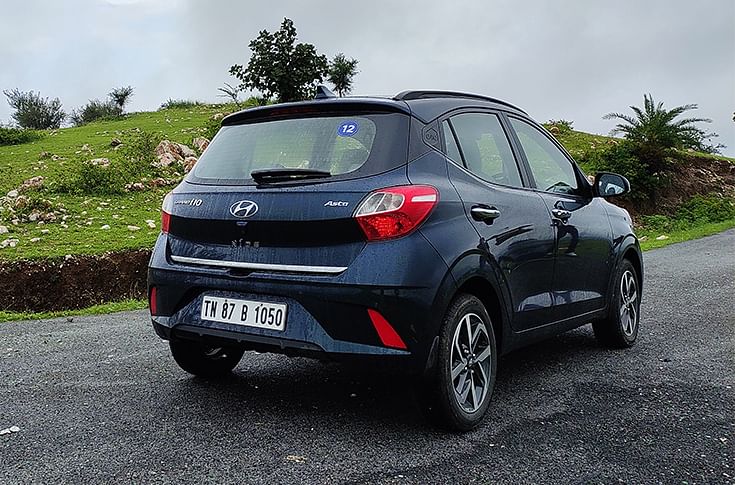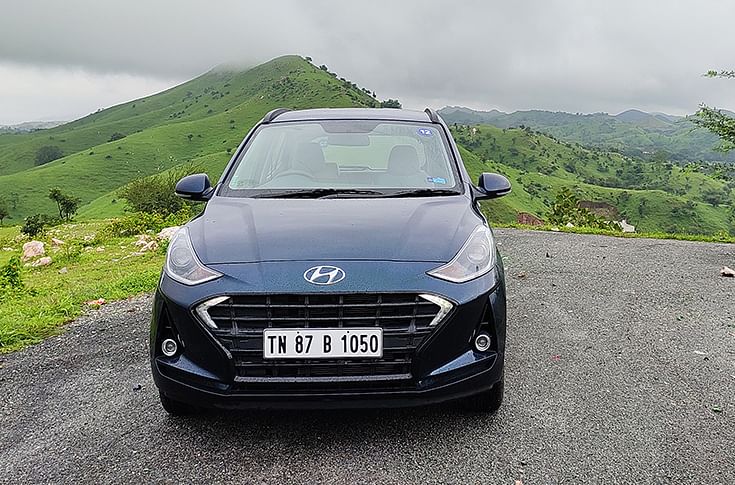Hyundai makes a pitch for more with the Grand i10 Nios
With the 3rd generation avataar of the popular i10 range, Hyundai wants to tap the customers preferring premium compact cars. The first hatchback, and possibly the only one, to be launched during the current financial year, the Nios offers more, or does it?
What is the best strategy to gain volumes in the auto industry? Design and develop a good product for a segment that's on the rise. Or launch in a segment that's falling the least if the market is down badly (as it is now), right? Hyundai seems to be thinking differently. In a market where the SUV, or anything SUV-ish, continue to be preferred more comes the Grand i10 Nios. It's a pure hatchback and there's nothing SUV about it. The Indian compact car segment currently contributes 48 percent of the overall passenger vehicle (PV) market. The Grand i10 Nios sits in a sub-segment that contributes 24 percent, or about 22,000 units monthly, to the overall compact car segment.
It was in 2007 that the brand i10 started its journey. The second generation of the model, named Grand i10, arrived in 2014. With the Nios (Irish for 'more'), and more is the pitch Hyundai is making for the Nios to tap the significant number of customers who would buy a premium compact car. A good number of the first time car buyers too. Like the way the i10 continued to live alongside the Grand i10, the Grand i10 will continue to attract the 'value seeker and price-conscious buyer'. The i10 bowed out some time ago.
Bets on more
So, what can the buyer expect in the Nios? In line with its name, it's longer (+40 mm), wider (+20 mm) and gets a longer wheelbase (+25 mm) than the Grand i10. Pitched squarely against the Maruti Suzuki Swift, the Nios matches its well established competitor in terms of the wheelbase, but falls short in the other parameters with the figures mentioned above. However, Hyundai says that with some smart packaging the Nios is more spacious at the rear with more legroom, shoulder room and headroom compared to the Swift's. We didn't have a measuring tape but the seats do feel comfortable and spacious. They are designed well to offer good thigh support and bolstering in both front and rear seats. The rear seat bench has a flat design for 3 passengers to seat well.

An 8-inch touchscreen infotainment system, 5.3-inch digital speedometer and multi-information display, Arkamys audio, projector headlamps are among the list of 21 features that the Nios gets over the Grand i10.
Diesel to stay
Diesel may be losing favour in the automobile market but Hyundai is not giving up on the fuel. So, in contrast to market leader Maruti Suzuki's decision to exit the diesel market once BSVI emission norm kicks in from April 2020, the number two player wants to continue playing in the diesel segment. Therefore, the Nios comes with a diesel variant (BSIV as of now). Both the petrol and diesel variants have 1.2-litre engines and offer options of manual and Automated Manual Transmission (AMT).
Hyundai's in-house developed AMT has the electronic gear and clutch actuators as against the usual hydraulic ones. This is aimed at making the system lighter, shift shock-free and respond quicker. Not sure about the quicker response but the shifts were fairly smooth.

Hyundai is betting on its well tested and validated experience of building Euro 6 engines in overseas markets, and the global economy of scale to be able to price the BS6 Nios competitively. The claimed fuel economy of the BSIV Nios diesel is 26.2 kmpl, a difference of little over 5kmpl more than the petrol version. The 83 PS in the petrol and 75 PS in the diesel exactly matches the Swift's figures.
High on practicality, not so on excitement
If a car buyer is looking for a spacious hatchback with a healthy dose of modern technology, features and space, the Nios offers them well. It's a practical car. When it comes to driving, we wished there was more steering feedback. A competent city car it is, but not quite exciting on the highway.
On the looks department, we quite liked the full frontal and the rear look of the Nios. Not quite the side profile, but then looks are subjective.
Certain design enhancements like a wider rear windscreen, reduced A-pillar dead angle and larger ORVMs aid a safer drive. Nios's body shell gets around 65 percent of advanced and high strength steel along with lower stiffener in the bumper area to offer good occupant and pedestrian safety.
The Nios' price tags range from Rs. 4.99 lakh to Rs. 7.14 lakh in petrol, and Rs. 6.7 lakh to Rs. 7.99 lakh in diesel. When compared to Swift, the price difference ranges from Rs. 15,000 to Rs. Rs. 39,000 in petrol. In the diesel segment, it's Rs. 33,000 to Rs. 45,000. Along with the price difference, it may take some very strong efforts by the Nios to race successfully against the Swift. Post-April, Hyundai will look to well capitalise the opportunity that the exit of the Swift diesel will offer. We will keep tracking all market movements and strategies. Keep watching this space.
Also read: Hyundai launches Grand i10 in a Nios avatar
Hyundai rolls out first Hyundai Grand i10 Nios from Chennai plant
RELATED ARTICLES
Complete List of Cars and SUVs Tested by Bharat NCAP
Bharat NCAP has crash-tested 20 models to date, including both ICE-powered vehicles and EVs.
Belrise Industries: A Story of Grit and Focus
The Belrise Industries IPO is the culmination of a multi-decade journey by entrepreneur Shrikant Badve that started in a...
Mahindra and Lightweighting: Solid Steel To Nimble Aluminum
Stricter emission regulations and rising fuel efficiency targets are driving a fundamental transformation in powertrain ...





 30 Aug 2019
30 Aug 2019
 31150 Views
31150 Views





 Autocar India
Autocar India


 Shahkar Abidi
Shahkar Abidi


